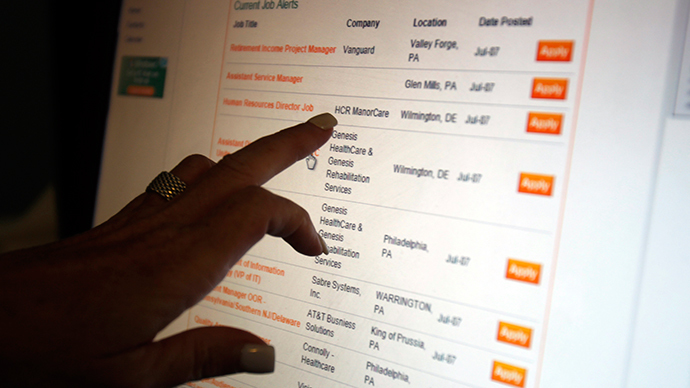Poorest Americans left out of federal aid despite 74 percent spending surge

Over a period of two decades, 2.5 million single parent families experienced a 35 percent decline in federal assistance while those earning slightly more saw aid rise 74 percent, the New York Times reported.
The findings come from research that covers the 15 largest social safety net programs of the period between 1983 and 2004. They demonstrated that aid spending had dramatically increased. Despite this news, those earning as little as 50 percent below the federal poverty level, or $11,925 a year, were getting less support even though those earning 200 percent above the poverty level, or $47,700 were experiencing an increase in support.
Additionally, the review found that the elderly and disabled were benefiting more than younger individuals and the non-disabled, though families with married parents saw more support than single-parent families. In 2004, single-parent families received 20 percent less support than they did in 1983.
READ MORE: Plans to drug test welfare applicants considered in a dozen states
The period of study hints at the possible consequences of welfare reform legislation enacted during the presidency of Bill Clinton with the help of a Republican Congress, after which the amount of aid delivered to single-parent families decreased.
“You would think the government would offer the most support to those who have the lowest incomes and provide less help to those with higher incomes,” Johns Hopkins University Economics Professor Robert A. Moffitt said in a statement. “But this is not the case.”
The findings come from a new study, called “The Deserving Poor, the Family, and the US Welfare System by Moffitt,” which is set to be published in the journal Demography.
The New York Times reported “that working families across the US account for nearly three quarters of the people enrolled in major public benefits program and 63 percent of the costs.”
READ MORE:Majority of America's public school children are living in poverty
The shift in aid away from the neediest families could have been affected by welfare reforms passed during the Clinton administration. The Personal Responsibility and Work Opportunity Act of 1996 created the state-based Temporary Assistance for Needy Families, (TANF), which imposed time limits and work rules for recipients. These restrictions narrowed the pool of candidates eligible for benefits.
Three assistant secretaries of the Department of Health and Human Services resigned over the legislation, saying the law destroyed the safety net and would lead to increased poverty, would lower income for single parents, put people from welfare into homeless shelters and leave states free to eliminate welfare entirely.
READ MORE: Poverty-stricken neighborhoods almost triple in US
In an interview with NYT, Charles Constance, a parent of a nine-year-old boy, said he couldn’t find work or the help he needed to raise his son. Recently the two have been living in a homeless shelter.
Constance has a prison record; he qualified for $123 a month in TANF assistance in exchange for community service, though the time and money needed to commute for it made the situation unworkable.
Some 3.4 million Americans draw on TANF, which provides cash benefits to families with children. The program requires parents to keep immunizations and health checks up to date for children, keep their children in school, cooperate with Child Support Services to establish paternity and participate in a work/training program for at least 30 hours a week.
The Food Stamp program, which also expanded greatly, does help everyone but only provides about $5 per day per person. Some 46 million Americans are qualified for the program.
Overall, Moffitt discovered a distinct trend of welfare benefits going to those who are regarded as “deserving” of support. Put more directly, Moffitt said, the government and voters prefer that aid go to those who work, who are married and who have kids.












